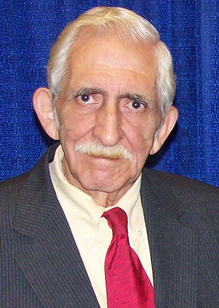by Joseph P. Tartaro | Executive Editor
The 2014 elections are mostly over, except for a few scattered recounts and at least one notable runoff in Louisiana. Gun owners won some and lost some, but mostly we won.
The pro-gun majority in the House of Representatives has increased and, more importantly, there is now a pro-gun majority in the US Senate. In addition, there are now more pro-gun, pro-self-defense governors, and more state legislatures that have greater respect for the right to keep and bear arms. We won most of the referenda and initiatives that were before voters in several states, except the big one in Washington State, where public confusion about background checks of gun buyers, coupled with really big-moneyed anti-gun support, may come back to haunt us in 2016. And, of course, important governors’ races in Colorado, Connecticut and New York, although in all three state gubernatorial elections, the architects of really bad gun laws won by the slimmest margins.
Given the overall results of the 2014 elections, some pro-gunners might think that it is time to cheer and relax, but that would be a mistake. Right after such a win is not the time to rest. It is instead, a key moment to vigorously pursue an aggressive campaign to reform some of the worst gun laws, especially at the national level. To that end, I have compiled a bucket list of objectives gunowners should be pursuing immediately after the elections. We should be working on achieving these reforms now, lining up support from old friends in Congress as well as the friendly newcomers to fix a lot of problems.
I’m going to list them as they come to mind, not necessarily in order of importance. You can decide on that, but all of them are important.
Near the top of our list should be passage of federal legislation allowing people who have been licensed to carry concealed in one state to be able to do so in every state, federal enclave and US territory. You can call it national reciprocity if you wish, bills designed to solve this good faith problem have been filed in the House for several years, but now is the time to push for passage in both the House and Senate. The states’ rights argument which has been advanced to prevent their passage is a sham. The people who want to dictate legal carrying laws only at the state level are the same people who push their anti-gun schemes at the federal level. And, if President Obama threatens to veto, or actually does, let his party and his supporters answer to the voters in the 2016 presidential and congressional elections. Recent polls confirm that more Americans believe they should have the means to self-defense than ever before.
And while we’re fixing the national reciprocity problem, it would be smart to make the Firearms Owners Protection Act (FOPA) really work, in New York and New Jersey as well as the rest of the nation. The recent incident involving Pennsylvania-licensed Shaneen Allen in New Jersey is just the latest in a long series of similar horror-stories involving innocent travelers who were demonized on the highways or at airports believing they were protected by the federal FOPA. New York, New Jersey, Washington DC, and some other local jurisdictions have waged an expensive war on innocent travelers. If the FOPA is to work, it has to function for every law-abiding American traveler on every state or federal highway, every airport, every train or bus station in the nation and its territories and commonwealths.
Another injustice in law that currently needs repair is the restoration of rights provisions of the Gun Control Act. At present, the law provides for restoration of the right to acquire and possess a firearm by the Bureau of Alcohol, Tobacco, Firearms and Explosives (ATF) for applicants who have proven they are no longer a danger to society. While this law has been on the books since 1968, it has not been applied since the early 1990s when Congress first cut off budgeting for the necessary ATF investigations.
And, while Congress is reviewing this corrective action, it should legalize a similar restoration of rights approach for some of those people deprived of firearms rights for life because of an ancient misdemeanor domestic abuse charge that occurred years earlier and may not have even involved a trial. In many cases, the scars of such domestic abuse many have long since healed even among the original participants in such family fracases. It’s time to temper the immoderate meanness of the Lautenberg law.
With the changing public attitude regarding marijuana legalization for medical or recreational use altering public policy, something has to be done to reclassify the state-legalized use of marijuana in the federal drug code. At present, the state-legalized use or possession of cannabis by a gunowner is cause for permanent revocation of gun rights at the federal level. This conflict between federal and state laws deserves to be resolved for the benefit of society as a whole.
Finally, I would suggest that federal law clarify what is and what is not an “assault rifle.” There is a perfectly acceptable definition that is used by the Pentagon. It is simple and factual. It deal focuses on the selective fire capability of a rifle or carbine. It is a definition that comports with that of the German army that first used the Sturmgewehr nomenclature in 1944. It has nothing to do with the capacity of detachable magazines, pistol grips, flash suppressors, folding stocks or bayonet lugs. If the Pentagon’s definition was applied nationwide, it would cause a rethinking of many of the state laws that demonized firearms for cosmetic reasons.
That’s my post-election bucket list. If you have other action items, please let me know, and be sure to discuss the issue of this post-election reform agenda with your fellow grassroots activists.





